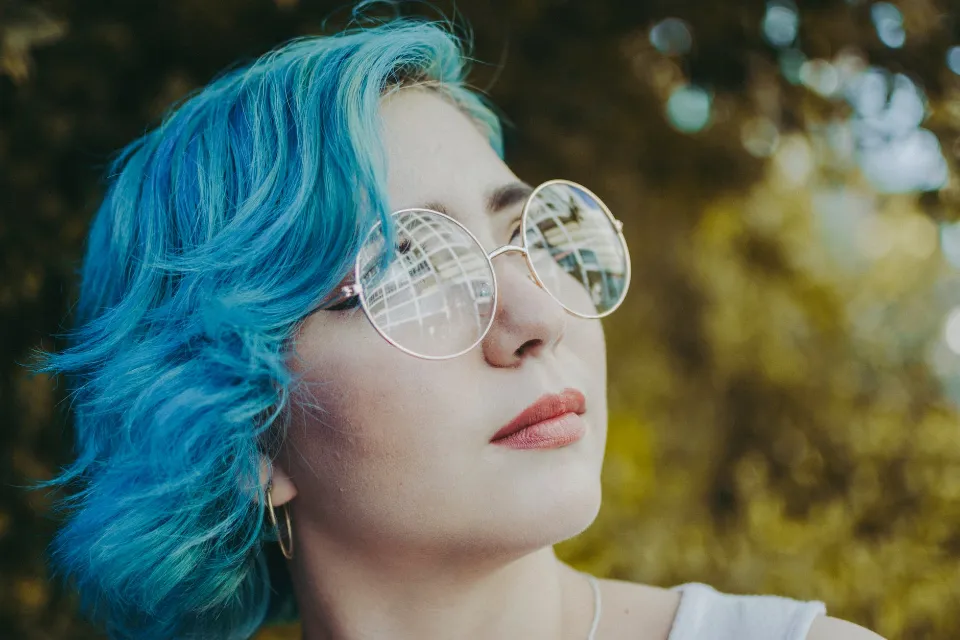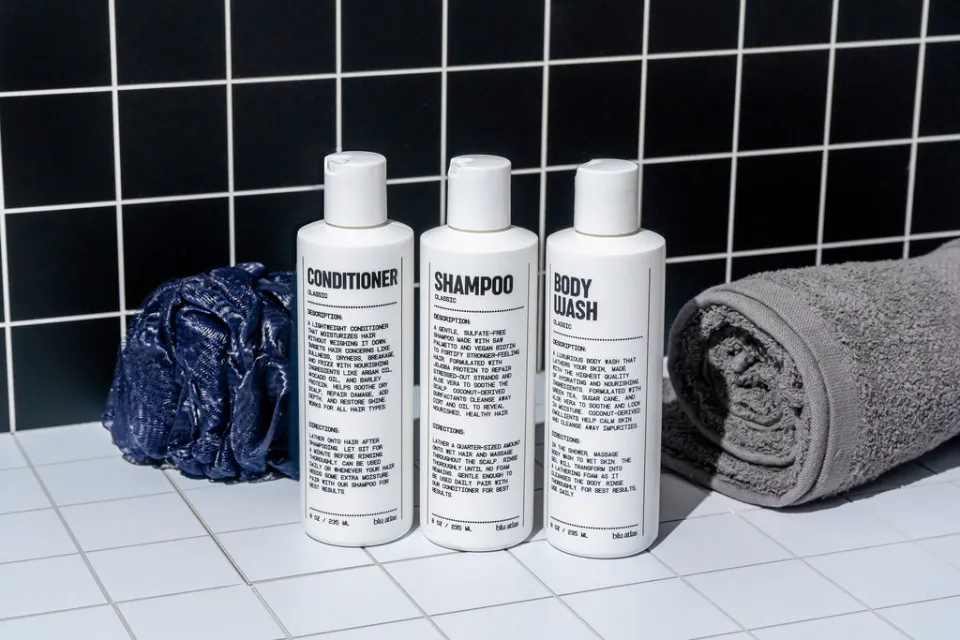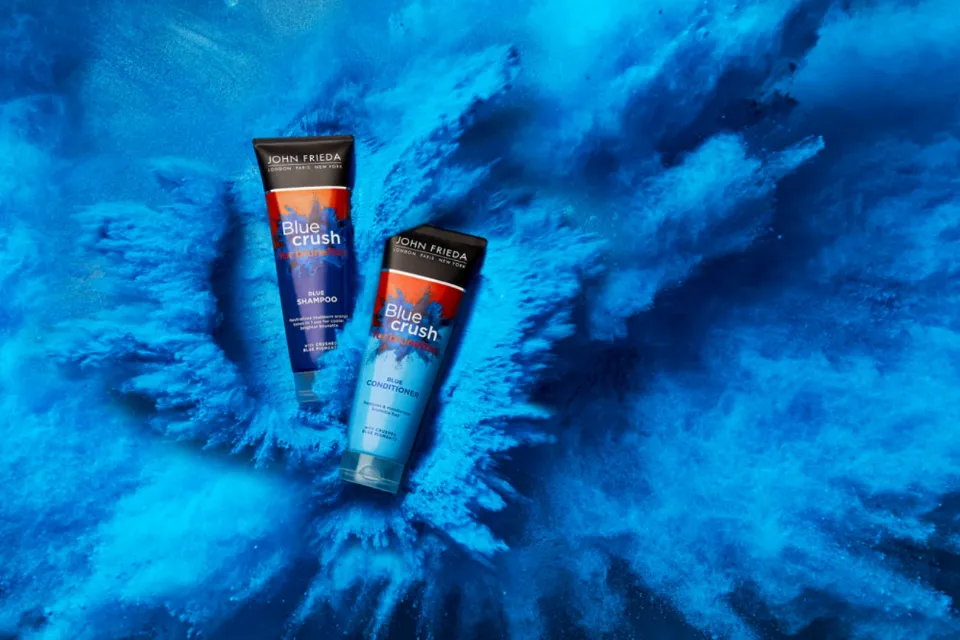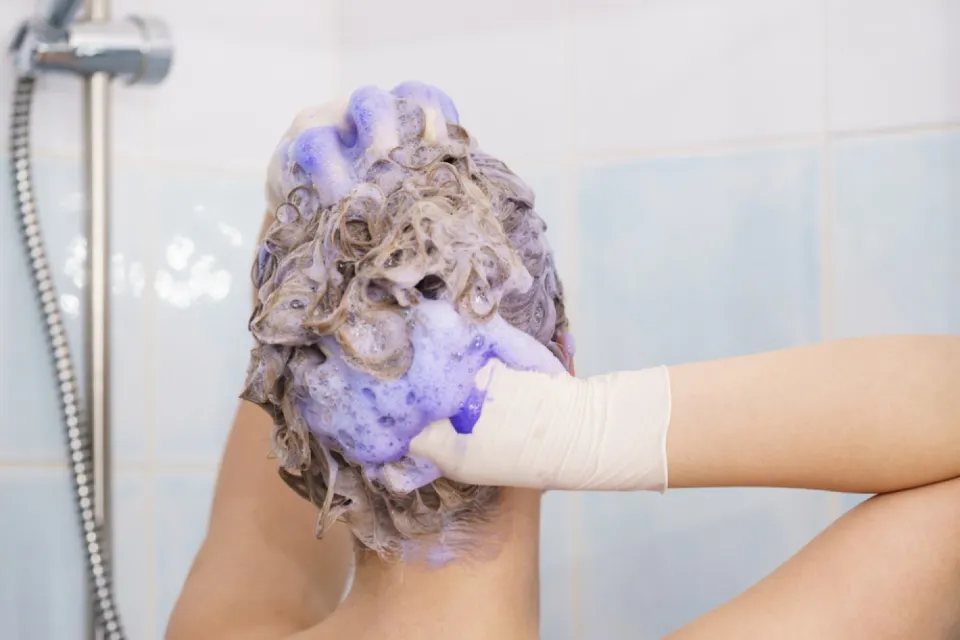It’s challenging to dye hair a new color. But when you are tired of blue hair, you may wonder what color can I dye my hair after blue. We have listed all suitable colors in the following for you!
It’s wonderful to experience blue hair for the first time. Everyone will admire your audacity and creativity. It is, however, a difficult process to get rid of.
You can dye color like purple, green or turquoise after blue hair. To learn more, continue reading.
What Color Can I Dye My Hair After Blue?
If you’re keen on experimenting with other unusual bright colors, the three best colors you can choose to dye over your blue hair are:
- Purple
- Green
- Turquoise
- Brown
- Red
- Black
What is the secret that makes these colors the best option?
There shouldn’t be any issues switching from one of these colors to another because they all have a blue base.
The good news is that switching from blue to a different unconventional color doesn’t take much effort. To use the new hair dye over the blue color, all you need to do is give it some time to fade.
Choosing a darker shade of the color you want is the trick to success. Your hair will probably end up looking uneven and messy if you choose light or pastel shades of purple, green, or fuchsia because the blue dye will likely show through the new coat.
How can you be sure that your choice was the best one?
We’ll describe each color in depth to assist you!
Purple
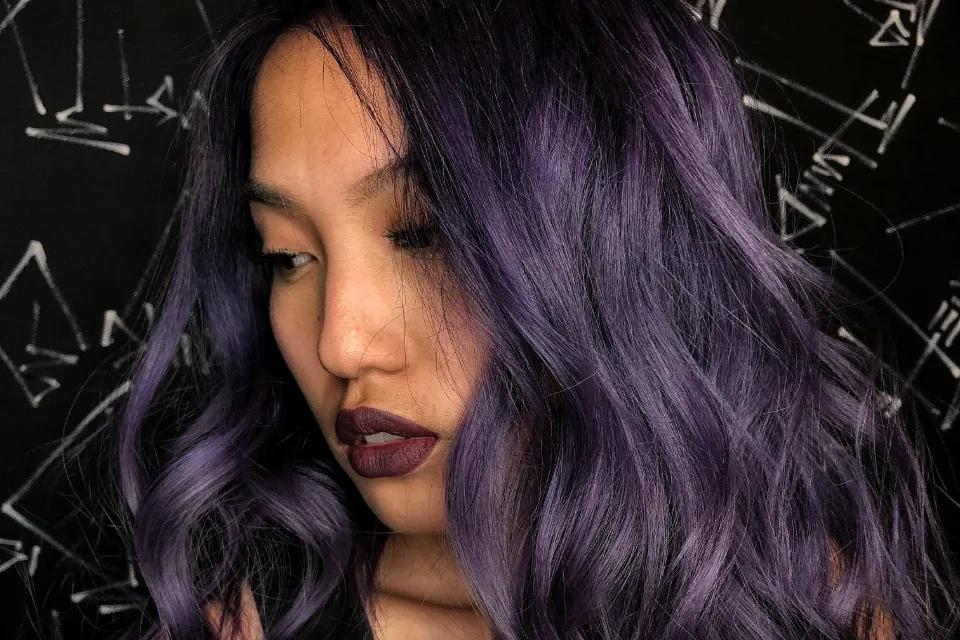
Purple is a comprehensive color, suitable for people of all skin tones and hair colors.
Given that this type of makeup is primarily made up of blue pigments, blue will make a fantastic starting point.
When mixing various tones of the same color, you can produce brand-new hues that are even more stunning. Red and blue, for instance, combine to form purple.
The quantity of blue or red, however, determines how intense or deep the purple is.
Using purple repeatedly to keep green from showing up on the hair will give you perfectly purple hair.
Green
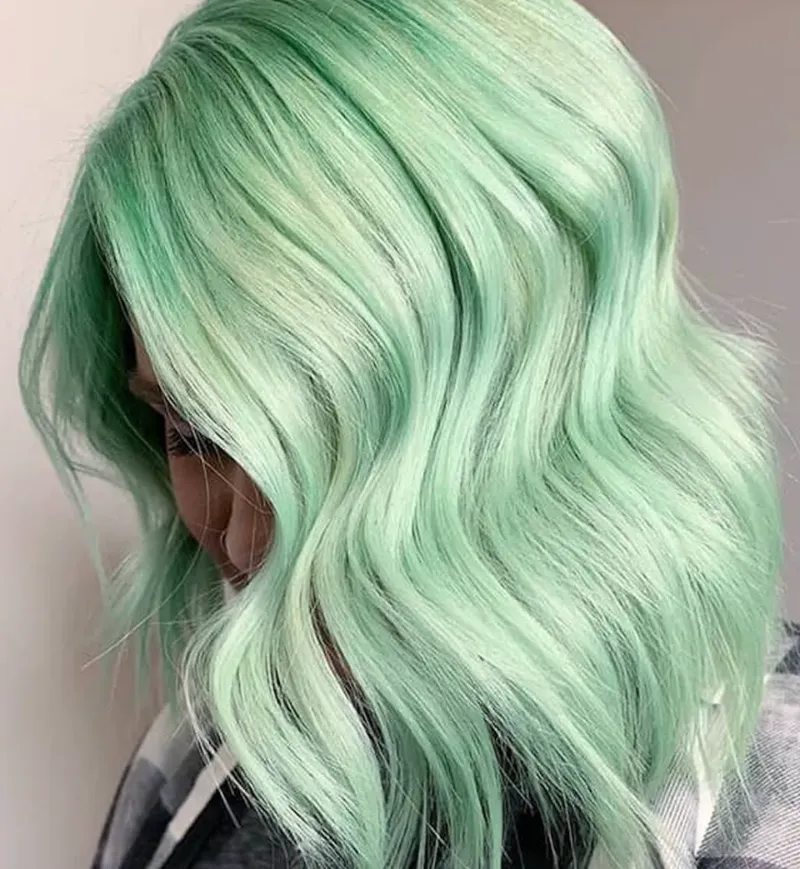
Unbelievably, one of the most popular colors in hair salons is green. It has blue in it, so it shouldn’t have any trouble changing from blue to a darker shade of green.
But there’s no need to choose a much darker color in this particular instance. The best colors to pick from are a darker shade of forest green or a medium shade of olive green.
Turquoise
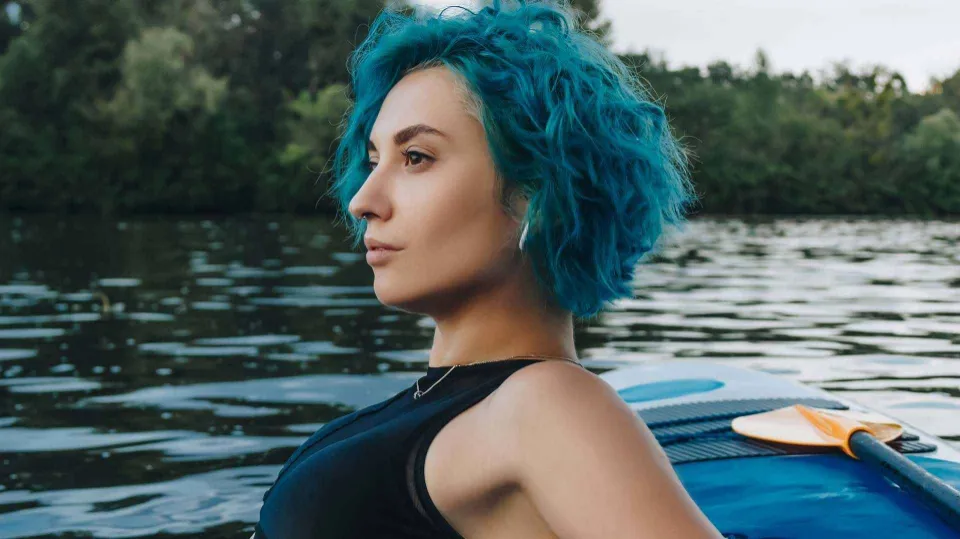
Since turquoise contains a significant amount of blue, it is frequently referred to as a shade of blue. This is why switching to this color will cause you the least trouble.
Any shade of turquoise you choose, from medium to dark, will look fantastic.
You Might Also Like: What Hairstyle Suits Me?
Brown
Brown hair is naturally present in 56% of women, making it the most conventional color. The color brown is also universally flattering due to the same factors.
How well will it cover your blue hair is the question.
You don’t need to worry; this lovely shade will perfectly conceal the blue in your hair.
You have the option of permanent or semi-permanent dye when it comes to conventional colors, which includes brown. Additionally, you can decide which shade of brown complements your hair’s current shade of blue the best.
For example, if your hair is light blue, you can also opt for the light brown shade.
If your hair is neither very dark nor very light blue, you can choose from medium bronze, golden, or auburn brown; however, we believe medium cool brown will look the best. The best dark brown shades to conceal dark blue hair are brown-black and other shades of dark brown.
Black
If you dye your hair blue and try to remove it several times, it will leave a distinct green hue, which will fade away gradually, but will leave blue marks.
There doesn’t appear to be any other solution to this problem besides dying that blue hair black. What’s more, you can achieve this look without bleaching your hair.
Related Post: Should I Dye My Hair Black?
Red
There is no need to take your current blue color into account when switching to red. Red has so much pigmentation that it can almost completely mask any other color, including the majority of blue hues.
Again, you can opt for permanent or semi-permanent dye; whichever one you choose, the blue will vanish from your hair.
You name it: plum red, cherry red, ruby red, fire-engine red. There are many different red hues, so pick the one you like best!
- What Color Cancels Out Red Hair Dye?
- What Color Should I Dye My Hair?
- What Color Can I Dye My Black Hair Without Bleaching?
What to Consider When Picking a New Dye?
Irrespective of color, the dye you select can have a significant impact.
Most unconventional hues aren’t dyes that last forever. So, if you’re hoping to switch to a pastel pink or turquoise, for example, your choice might be limited to color-depositing shampoos and semi-permanent hair dyes.
Long-term hair color changes are not intended for semi-permanent hair dyes. The actual color of the hair is not altered by these dyes; they merely cover the hair shaft’s exterior.
They are an easy-on, easy-off solution when you want to try out a new look. But you should pick a permanent hair dye if you want a long-lasting fix.
With a few notable exceptions, permanent hair dyes are rarely available in non-traditional hues. You can experiment with mixing them up to create different colors and shades if you or your hairdresser are creative.
However, there are many options and both permanent and semi-permanent dyes are available when it comes to traditional colors.
They have the same effect – but with one significant difference:
Namely, unlike semi-permanent dyes, permanent hair dyes contain ammonia. Ammonia works to crack open the hair’s cuticles, allowing color to penetrate deeper and last longer.
We still advise using semi-permanent ammonia-free hair colors whenever possible, despite the fact that ammonia-based permanent hair colors are generally more vibrant and long-lasting.
They protect the hair and cause much less harm.
How to Color over Blue Hair
The most intriguing query regarding blue hair was thus finally brought up. We already know that brown is the best color to replace blue, so the time is right to learn how to gradually dye blue hair brown.
Essentially, this procedure is very similar to the one used to dye hair.
- Consider purchasing the permanent or semi-permanent brown dye kit of your choice.
- First things first, perm and semi-perm dyes can only be used on dry hair. Therefore, comb the locks thoroughly to unlock each thread and make sure that there are no knots or kinks. Otherwise, the paint won’t be applied smoothly and uniformly.
- Mix the components according to the instructions attached to the staining kit and prepare the staining mixture.
- Check to see if the materials you receive are homogeneous.
- Put on your gloves and start walking right away! Start by precisely applying the coloring mixture from the hair’s root to its tip. Be extremely cautious because even an inch of hair can be missed. Some claim that it would be preferable if you used your fingers to gently rub the dye onto your hair, much like you would when shampooing, but in our opinion, the decision is entirely up to you. If you ignore the advice, at least the outcome is not disastrous.
- After applying all the dye, apply it to the hair for 30 minutes and then keep it for no more than 45 minutes.
- Finally there is the final stage of the show! We recommend rinsing the newly dyed hair until the water becomes clear, and do not use shampoo or anything else. This is because freshly applied paint has a tendency to rip off hair. However, conditioner is a good option for moisturizing your hair.
- As you can see, mixing one dye with another is simple. The biggest concern is deciding on a color. Unless you are a professional, it is best to seek advice in this situation from one.
Also Read: How to Dye Bleached Hair Back to Natural Color?
Summary: What Color Can I Dye My Hair After Blue
Having blue hair makes you an adventurous, daring person, and that’s good because switching to another will be quite an adventure, too!
Following blue, purple, green, Turquoise, brown, red, and black are the best hair colors to use.
Pay attention to how faded your blue is and pick that one. Think about the condition of your hair and whether you want a permanent or semi-permanent change.
Read More: Can You Dye Your Hair With Food Coloring?
FAQs
Can I Put Brown Dye over Blue Hair?
Yes. Brown hair dye is one of the best colors you can use to dye over blue hair.
How to Neutralize Blue Hair?
If you are trying to cancel out blue hair, you would use its opposite color: orange.

